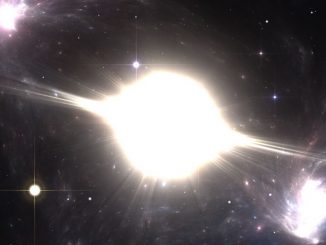Not so long ago, astronomers thought of the Milky Way’s central bulge as an old folks home where mostly ancient stars congregated and slowly moved about. But more recent observations, including this spectacular view captured by the Hubble Space Telescope, and an analysis of about 10,000 suns in the bulge reveal a much more dynamic environment where stars of various ages move about at different speeds. The faster, younger stars may have been captured as the Milky Way cannibalised smaller galaxies, mingling with older, slower-moving suns.




